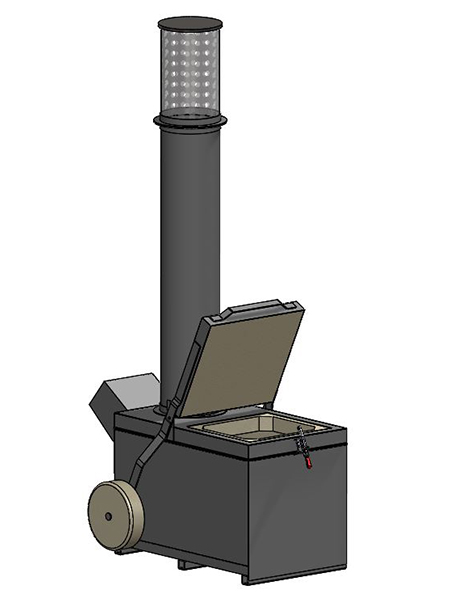There are many options Firelake can offer and many ways you can operate a cremation/incineration unit. If price is important to you follow through the cremation and incineration terms and details below before making a decision.
Cremation and Incineration Terms you Should Know
Secondary Burn Chamber
Normally a separate combustion chamber with a burner located downstream from the where the load is processed. The purpose of the second burn chamber is to combust unburned gases and particulate coming from the primary burn chamber. This secondary burn process is often considered a “cleansing process” intended to reduce stack emissions. This feature comes at a cost for added equipment and burner fuel. The effectiveness of a secondary chamber to reduce stack emissions varies. Factors to consider are what is burned and how well the incinerator is designed.

Operation temperature
Normally the temperature of the air space inside the incinerator’s combustion chamber. The higher this has to be maintained the more it will cost you to operate. Experience has shown 1000F/540C may be adequate to burn with no visible emissions. Rules in your area may dictate a higher number. Some authorities dictate operating at 1600F/870C or more. Achieving and maintaining high temperature may double or triple the fuel burned.
Flame temperature
Measured in the flame itself this value may be stated as high as 3000F/1650C. This is often confused with Operating temperature which is always less because the surrounding surfaces absorb heat and external cooler air passing inside the chambers dilutes the temperature within the chamber itself.
Retention time
Calculated to show how long the combusted gases are in a defined space/chamber before entering the stack. Like operating temperature, the greater the time desired the more cost incurred due to the need for larger equipment and more fuel to heat it. If a minimum temperature is required the amount of burner fuel will increase significantly as the space volume increases. Some authorities require as much as two-seconds retention, this is six times the retention of a basic design. Basic designs have been in use for decades and operating without visible emissions. However, rules put in place by regulatory authorities over the recent years have typically bumped up retention time and temperature minimums. Retention time is either actual by tests or calculated. Calculated values should include excess air and waste burning. Be fair if comparing models between manufacturers. Retention time is often determined in different ways.
Burner fuel
Normally natural gas is less cost than Propane, and Diesel cost varies by areas. Diesel burners are a bit less cost to buy than gas burners but long term the fuel consumed will be the dominant decision factor. Keep in mind diesel has 50% more btu per gallon than propane and propane has 2.5 times the btu per volume as natural gas. Example 1; paying 25% more for diesel over propane makes diesel a better deal. Example 2; Paying $1.60 for diesel compared to $1.00 for propane is not a good deal for diesel. In most cases if natural gas is available that will be the most cost effective of any fuel option. Be cautious of claims from incinerator manufacturers for fuel or electrical savings that are too good to be true.
Scrubbers and Filters
Self-contained equipment placed after the incineration process to further reduce stack emissions. Reduction can be up to 99% but cost increases with effectiveness. Are they needed? If your area requires certain emissions to be below established values then maybe you do. We have found our incinerators already meet many established requirements. Adding a scrubber may be just adding cost and complexity. Did you know a proper performing scrubber may be a couple hundred thousand dollars plus chemicals and an operator to manage it? Be diligent in comparing incinerator scrubbers filters, and needs compared to effectiveness and costs.
Controls
Manual, automated, or a combination? Simple is better, simple is less cost. Firelake Manufacturing uses digital timers to start and end the process. These timers are reliable and function as simple on-off buttons. Firelake uses internal circuit controls that are easily accessed using visible relays and terminal strips. Unless requested, we do not use hidden computer programmed features that require high skill sets to install, operate, and service. Our incinerators and cremator equipment has easy to follow wiring diagrams which mean low cost to maintain and trouble shoot. Firelake parts are available individually and our relays at $30 are more attractive than competitive designed program modules and boards at $800 each to replace. Some competitors only extend warranties if their staff is contracted to do all the service.
Check with your local authorities to see if your application falls within any of the above rules or qualifies for an exemption due to small burner sizes, mass of loads processed, amount of btu the burners are rated, or type of waste handled. Firelake Manufacturing is ready to discuss options based on your application. Let us help minimize the cost to get you in to a suitable incinerator or cremator design.
Questions?
If you still have questions after reviewing these cremation and incineration terms, please contact us. We are happy clear up any questions or discuss what cremator or incinerator options are best for your needs.

